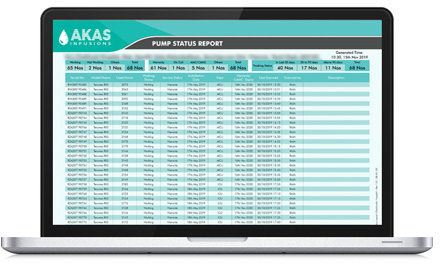
An Intensivist starts a Vasopressor in case of a severe hypotension and measures the Non-Invasive Blood Pressure after 2 minutes. It does not improve a bit. Again measures after a couple of minutes, Does not improve a bit. Repeats it after a delay of 2 or 3 minutes. No Improvement. He expects some improvement in 2 minutes as the half life and action onset of most of the vasopressors are less than 2 mins. The intensivist is perplexed on whether to increase the dose or to change the drug. Have you experienced this ever? Then read this article fully to understand the problem and avoid this in the future.

Vasopressors once introduced to the patient are expected to act in 1 or 2 minutes time. Even if the dose is low, it is expected to bring some improvement in most of the patients. It leaves the Intensivist perplexed when there is no improvement in Blood Pressure or Cardiac Output. What goes unnoticed is the syringe infusion pumps and their setup procedure.
All Syringe infusion pumps do not infuse the drugs the moment they are started on infusion. Dopamine starting dose is around 3 to 5 ml/hr for most of the adult patients (5mcg/kg/min and 4mg/mL). Every one believes that the drug is delivered to the patient the moment the RUN button is pressed on the syringe infusion pump. The nurses are well trained to PRIME the Drug delivery line by pushing the syringe manually with the hand and ensuring couple of drops spills out of the drug delivery line. That is not enough.

At the time of fixing the syringe on the syringe pump the plunger may get disturbed say by 0.5 mm to either side. This will suck some air from the end of the drug delivery line. This 0.5 mm will be equivalent on 0.3 mL of air on a 50mL syringe and 0.2 mL on a 20 mL syringe. Further to it when the machine is started by pressing the RUN button, there is a MECHANICAL SLAG in every syringe pump that causes a delay in the movement of the syringe plunger from the time the pump is started. M

This is a few minutes based on what conditions the mechanism is left at the time of placing. This is unpredictable. But the worst case delays can be as high as 5 to 8 mins for 3 mL/hr of starting dose. If the flow rate is lesser at 1 mL/hr on 50mL syringe the delay can go as high as 15 to 25 mins. This happens with all syringe infusion pumps.
Once the mechanical slag is corrected over time, then the rubber in the syringe barrel needs a pressure before which it starts moving. Depending on the brand of the syringe used this may also delay by 3 to 8 minutes at 1mL/hr infusion rates on a 50 mL syringe. Then the fluid starts actually moving and getting infused. Now the Air gap introduced at the time of fixing the syringe on the machine has to be filled up. This is around 0.3 mL at the worst and take 6 min at a flow rate of 3 mL/hr and 18 mins in case of 1 mL/Hr.
After all this delay the drug starts getting infused into the Central Venous Catheter lines. If the drug is first introduced to the catheter it may take 0.3 to 0.5 mL depending on the gauge and length of the catheter to fill the central venous catheter and reach the patient. This is 20 to 30 mins on 1mL/Hr or 6 to 10 mins on 3 mL/Hr.
The above tables confirms that there is a delay of drug onset to the patient between 20 to 96 mins at various flow rates on a 50mL syringe while using any drug at low infusion rates. The vasopressors are life saving and are expected to give results in short duration and if there is no improvement the intensivist may decide to change the course of treatment. Even during switching of syringes (One syringe empty being replaced with a filled syringe) such delays are witnessed there by BP variations are noticed. Every problem has a solution, the moment we understand what causes the problem the solution is simple. The cause of the problem is explained above in detail. Now the solution follows and it is simple. It is only a matter of education for the nursing staff on how to handle the syringe infusion pump.
After manually priming the drug delivery line, fix the syringe on the syringe pump. Then use the prime key or the bolus key and check the fluid spilling out of the drug delivery line. This will cover up the mechanical slag, back pressure of the rubber in the syringe and the air that entered the drug delivery line while fixing the syringe. Then connect the drug delivery line to the Central venous catheter or the peripheral catheter as ordered by the intensivist. If the drug is newly started in the line and if there is no other drug in the catheter, you can flush the catheter by giving a bolus on the machine to fill the exact volume of the catheter. The Catheter flushing volume is specified on the label. This may vary between 0.3mL to 0.5mL most of the times. After this you can start the ordered dosage. Follow the above solution will give you the intended results.